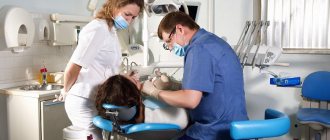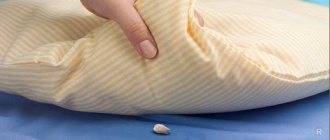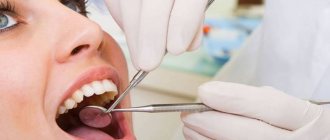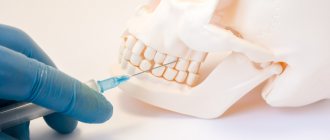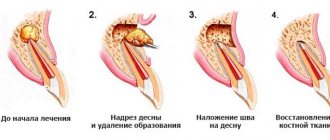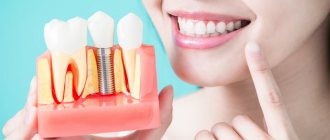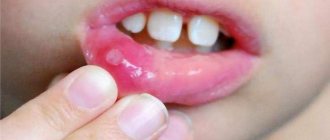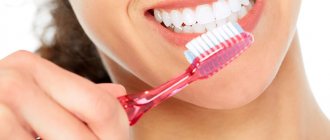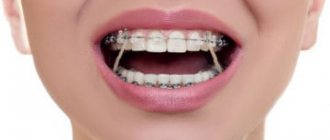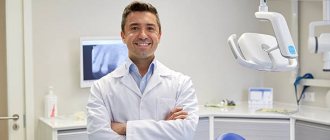The health of the dentition directly depends on the quality of care. The main prevention of oral diseases is regular cleaning. It is necessary to use toothbrushes, pastes, and floss daily. But home treatments are not enough for quality care. They do not allow you to remove hardened plaque and tartar. In modern dentistry, several methods are used to cleanse enamel. The Zuub Clinic offers its clients the safest and most effective technology.
Ultrasonic teeth cleaning allows you to qualitatively eliminate all formations, without harming the enamel, and acts as a preventive measure for major oral diseases.
What is ultrasonic teeth cleaning
The usual soft plaque that forms in the dentition can be easily removed with a brush or floss. But the formations harden over time and turn into stone. It is impossible to remove it with a brush. It is not possible to qualitatively remove plaque that contains components of tobacco smoke, coloring pigments of tea and coffee drinks. The use of chemicals creates a risk of damaging the enamel structure. This procedure is especially dangerous in case of increased sensitivity.
Ultrasonic cleaning uses a special device to remove plaque. Skyler creates an ultrasonic wave. Its length and frequency are selected by a qualified specialist for the patient personally, taking into account the condition of the enamel. Therefore, ultrasonic teeth cleaning is absolutely safe.
The wave, passing through a layer of plaque and stone, destroys their structure and forces it to separate from the surface of the teeth. After this treatment, formations are easily removed from the enamel. The wave penetrates into the interdental and subgingival spaces, fissures, and any hard-to-reach places. This ensures high quality processing.
How many times a day should you brush your teeth?
Timely and regular brushing of teeth is the main way to prevent caries and various gum pathologies. To prevent bacteria from accumulating in the oral cavity, you need to brush your teeth 2 times a day after meals. In the morning, you can brush your teeth before eating to wash away any bacteria that appeared in your mouth while you slept. After breakfast, in this case, it is permissible to simply rinse your mouth with water or a dental rinse.
There is no need to brush your teeth too often because:
- The oral mucosa may dry out;
- irritation of the oral mucosa may occur;
- The microflora in the mouth may be disrupted.
When not to brush your teeth and why
It is not recommended to brush your teeth immediately after eating foods with high acidity: freshly squeezed juices, lemons. It is better to wait at least half an hour so that the enamel can recover from exposure to acids. It will still not be possible to clean your teeth efficiently at this time, but the risk of microscopic cracks appearing on the enamel will increase, which over time can lead to the destruction of the crown part of the teeth.
If you drink coffee or tea immediately after your morning brushing, the enamel will take on a yellowish or grayish tint that is difficult to remove even with the most effective whitening paste. This is due to the fact that immediately after cleansing, teeth are most susceptible to the effects of pigments.
How often should you brush your teeth?
Ultrasonic teeth cleaning is an excellent preventive procedure that allows you to maintain their health and beauty and prevent diseases. The wave not only destroys tartar and plaque. It destroys pathogenic bacteria, eliminating the risk of creating a source of inflammation. During the procedure, pigment spots and layers of dyes are eliminated. Teeth become 1-2 shades lighter, which makes your smile more attractive.
The frequency of professional treatment depends on individual characteristics. Each person develops tartar at a different rate. Ultrasonic teeth cleaning is a safe procedure and can be performed from one to 4 times a year.
Cleaning the enamel is part of the preparation for dental implantation and prosthetics. Sometimes ultrasound treatment is required to process canals when installing a complex filling to ensure reliable fixation. In such cases, the procedure is prescribed by a specialist.
Patient reviews
“I was afraid to clean it, I thought that the braces would fall off from the water pressure. But the doctor insisted and everything really went well. The braces didn’t come off, and my teeth became much cleaner.”
Alexandra, 24 years old, Voronezh
“I have always had problems with my gums, even before braces. With braces, the inflammation worsened, so cleaning was mandatory. Plus regular rinsing, care and treatment procedures probably took me at least half an hour a day. But after I took off the braces, there was no caries, and the situation with the gums didn’t get any worse.”
Read also: How to deal with tartar
Marina N., Novgorod
“The doctor did the cleaning for me at the same time as replacing the arc - every time or every other time. They didn’t damage anything, but the sensations were very pleasant, there was such relief on the teeth, as if the braces had been removed))”
Urta, from correspondence from forums
Price
The cost of ultrasonic teeth cleaning is determined individually; it depends on several factors:
- state of the dentition;
- availability of additional procedures;
- clinic categories.
If a dentist has to remove plaque and stones from all teeth, the cost of the procedure will be quite high. A patient who regularly undergoes professional treatment will not have to spend a lot of money.
After eliminating the formations, a number of additional procedures can be carried out: polishing, fluoridation, the cost of which is included in the total amount.
In high-category clinics, the price of cleaning is usually higher, since they employ highly qualified specialists and use effective drugs.
The importance of caring for baby teeth
Baby teeth form in the sixth week of fetal development. Normally there are 20 of them:
- 8 molars;
- 8 incisors;
- 4 fangs.
Temporary teeth consist of the same tissues as permanent teeth:
- dentin (in temporary teeth it is softer and less mineralized);
- enamels;
- pulp.
However, primary incisors, canines and molars have features:
- low crowns;
- large distance between crowns;
- long thin roots that dissolve before the temporary tooth falls out and the permanent tooth erupts;
- thin enamel - only 1 mm;
- wide channels.
The structure of baby teeth is only slightly different from permanent teeth, so they no less need proper care. You can start brushing your child’s teeth after the very first incisor has erupted. Early training in hygiene will be an excellent prevention against many dental diseases that can affect the primary incisors, and then the rudiments of the permanent ones formed under them.
If you don’t care for your baby’s teeth or care for them incorrectly, your baby will have to visit pediatric dentists already in the first three years of life. Or he may tolerate drilling rotted teeth with a bur, which is painful and unpleasant for a small child, even with high-quality anesthesia.
Many parents believe that baby teeth do not need as much care as permanent teeth, because they will fall out very soon. However, this approach is fraught with problems in the future.
Firstly, without having learned to do oral hygiene from a very young age, a child is unlikely to be diligent in this matter even after the appearance of permanent teeth.
Secondly, without proper and daily care of baby teeth, there is a high risk of their premature loss, which is why the baby runs the risk of developing health problems in adulthood - malocclusion, curvature of permanent teeth, gastrointestinal diseases, inadequate development of the maxillofacial apparatus, speech defects.
At what age should a child be taught to brush their teeth on their own? The optimal period for this is 2-3 years. And here you need to take into account several important recommendations.
Take your child with you to the bathroom and show how you brush your own teeth. Even better is to carry out oral hygiene at the same time. This should be done morning and evening, every day. In this way, the baby will begin to understand that this procedure is familiar to all family members and inevitably needs to be performed on an ongoing basis.
Milk teeth are similar in structure to permanent teeth, but are characterized by some features:
- low crowns,
- large gaps between crowns,
- thin (1 mm) enamel,
- wide channels,
- long thin roots.
Sometimes parents consider it unnecessary to take care of baby teeth and put off the moment when they should start brushing their child’s teeth until they are three or even four years old. The accumulation of food debris and the formation of plaque in children occurs in the same way as in adults; weak enamel is more quickly exposed to negative effects and is affected by caries.
A carious tooth is a source of infection that affects the baby’s entire body and provokes various ailments, including sore throat and pyelonephritis. Diseased teeth interfere with the quality of chewing food, which provokes problems with the digestive system. Advanced caries leads to premature loss of a baby tooth, as well as damage to the permanent tooth buds located at the roots.
Damage to baby teeth
Important! Untimely removal of a baby tooth leads to the formation of an incorrect bite, curvature of permanent teeth, and provokes disturbances in the pronunciation of sounds.
From the age of three, after all 20 baby teeth have erupted, children visit the dentist regularly (once every six months). The doctor checks the condition of the teeth and gums and gives individual recommendations for dental care.
A two-year-old baby can already hold and manipulate a toothbrush well. It is from this age that he is gradually taught to take care of his teeth independently. The best teaching method is the example of parents. Children always imitate adults, so joint visits to the bathroom in the mornings and evenings will show the baby the algorithm of actions.
Remember! At this age, the child only imitates brushing his teeth. Adults must supervise the procedure and correct any shortcomings.
In infancy, finger tips and dental wipes are used for oral hygiene.
Finger tips are made of silicone and latex, and have a fleecy or ribbed part. Usually parents choose the right one in accordance with their own taste and preferences of the child.
Some manufacturers produce oral foam that contains harmless lactic enzymes and air bubbles. The components help to gently and effectively clean your teeth and oral cavity. The foam is harmless if swallowed and is suitable for use from zero to two years.
Important! Teething gels can be dangerous for babies, as they contain ice caine.
A toothbrush and toothpaste are the main means of oral hygiene. In addition to the main ones, additional ones are produced:
- dental floss (floss),
- balm,
- rinse aid,
- chewing gum,
- brush,
- special toothbrush.
Joint oral hygiene
Teeth brushing technology
The duration of the procedure depends on the amount of work. On average, ultrasonic teeth cleaning takes 40-50 minutes. The procedure includes the following steps:
- examination of the oral cavity, assessment of the condition of the enamel, selection of wavelength and frequency;
- distribution of a special preparation on the surface of the teeth;
- ultrasound treatment;
- polishing
The procedure does not cause pain or discomfort, and no anesthetic drugs are used.
Our clinic employs qualified specialists with extensive practical experience. They will accurately assess the condition of the enamel and correctly select a safe operating mode. A special gel is applied to the enamel to increase the effectiveness of the wave. With its help, tartar, thick plaque, and age spots can be eliminated faster.
Special pastes are used to polish teeth after brushing. The procedure allows you to give the enamel ideal smoothness, eliminate unevenness and microcracks. This will prevent the formation of plaque on the teeth and prevent its accumulation for a long time. If the enamel is weakened, fluoridation is performed to strengthen its structure.
Stages of the procedure
- applying topical anesthesia to the gums to reduce their sensitivity,
- treatment of teeth with the tip of a device that delivers ultrasonic waves: they literally crush hard stone into small pieces, which is washed away with water. Ultrasound is used to remove deposits only from under the gums, otherwise the bracket plates may peel off and even break.
- treatment of teeth and gums with a water-abrasive Air Flow stream: it is directed both to the gums and teeth, and to braces. The device acts like a home irrigator, but copes with dirt much better. The doctor uses a stream with slight pressure so as not to accidentally disturb the fixation of the braces on the teeth during the procedure,
- enamel polishing: a brush with a rotating head and a special paste are used,
- A fluoride-containing gel is applied, which strengthens the enamel and temporarily protects it from bacterial attack.
In general, if you have a braces system, the complex of professional hygiene is carried out in a completely standard way, with the only exception: the doctor is required to be extremely careful, because the procedure should not disturb the fixation of the braces.
The emphasis when carrying out preventive cleaning is on the use of Air Flow technology, which, in the presence of a brace system, is considered safer and more effective.
The duration of teeth cleaning is about an hour.
How harmful is brushing your teeth?
Ultrasonic teeth cleaning belongs to the category of safe, gentle techniques that do not harm the enamel or the body. But before carrying out the procedure, consultation with a specialist is necessary, as there are certain contraindications. Processing cannot be carried out if:
- arrhythmias;
- ARVI;
- hepatitis, HIV, tuberculosis;
- implants, orthopedic structures;
- high enamel sensitivity.
This procedure is not performed on children and adolescents whose bite formation has not yet completed.
Features of the structure of milk teeth
What toothpaste should I use to brush my child’s teeth and at what age should I buy it? Experts believe that children under 1.5-2 years old do not need paste at all, just a brush is enough. After all, it is difficult for children under this age to explain how to rinse their mouths in order to get rid of toothpaste residues; they will also swallow the composition, which can provoke the development of an allergic reaction.
So, it is recommended to purchase the first toothpaste in a child’s life no earlier than 1.5 years. It must be safe to swallow and free of dyes and preservatives, as well as fluoride and abrasives. As for fluoride, its insignificant content in toothpaste is permissible only for children whose permanent teeth have already begun to appear.
It is good if the composition contains xylitol, medicinal plant supplements, lactic enzymes and calcium, minerals that can protect fragile enamel from the pathogenic effects of bacteria. You should give preference to pastes without a pronounced taste so that they do not become a treat for your baby.
Many parents wonder whether it is possible for a child to brush their teeth with adult toothpaste? This is strictly forbidden, because... the concentration of various substances and elements in it can be detrimental to the health of milk enamel.
Adhering to the required number of procedures is not the most important thing when following the rules of brushing your teeth. It is also necessary to follow the technique. What is the algorithm for such a procedure?
Brushing your teeth begins by taking a brush and applying a small amount of toothpaste to it. People often believe that the more product they take, the better their teeth will be cleaned. However, it is not. The paste must be taken in a very small volume, literally the size of a pea. The product in excess of this amount will most likely be absorbed by a person, which is very dangerous for the body.
At the next stage, you can begin the cleaning itself. It represents the performance of vertical movements. There is no need to press the brush hard against the enamel. It is more important to keep it in the desired position, which should be 45 degrees in relation to the gums.
When cleaning the surface of the dentition, you will need to gradually move from one side to the other. Dentists recommend holding each tooth for about 10 seconds. To make it more convenient, the mouth is conditionally divided into four sections, devoting 30 seconds to each of them. As a result, the procedure will take about 2 minutes.
Next we move on to the molars. When cleaning them, the brush should be positioned perpendicular to the upper or lower lip. The procedure is carried out using translational movements.
We suggest you read: What tablets help children with toothache
The next step is to move to the inside of the teeth. It is worth keeping in mind that it is in this area that pathogenic bacteria accumulate most. To perform the procedure, you should open your mouth wide. This will allow you to reach any hard-to-reach place.
Cleaning your tongue and the inside of your cheeks will help freshen your breath. According to dentists, this is where accumulations of more than 60% of pathogenic bacteria in the oral cavity are located.
After finishing brushing your teeth, you should rinse your mouth using warm water. Moreover, it does not have to be bottled. Tap water is also suitable for this procedure. It can be taken into your mouth from a glass or from your hand. Dental solutions are available for sale. They can be used for rinsing instead of water.
When finishing the procedure, you need to wash the brush. This is necessary to remove bacteria from her bristles. It is recommended to change the brush every 3-4 months.
Dentistry “Zuub” – teeth cleaning
Each person decides for himself whether he needs to see a dentist for professional teeth cleaning. But we recommend not to neglect this opportunity to preserve their health and the attractiveness of their smile.
Tartar does not cause any problems and may remain invisible on the inside of the teeth. But it is an ideal environment for pathogens. The result of their vital activity is acids that destroy the structure of gum tissue and enamel. Therefore, bad breath will definitely appear, and inflammatory processes in the gums will begin, provoking the appearance of gingivitis and periodontitis.
Ultrasonic teeth cleaning will help cope with these problems and prevent negative consequences. At the Zuub clinic you will find:
- impeccable service;
- high quality and safety of procedures;
- reasonable prices.
Comfortable conditions, modern interior, polite attitude will help you relax and calmly prepare for the procedure. A highly qualified dentist with extensive experience will work with you. He will select the wavelength and frequency that will not harm the enamel.
The doctors of our clinic have the latest generation of devices in their arsenal. Their use guarantees effective removal of the most complex formations and high-quality teeth cleaning. The procedure will not cause discomfort, you will not have to endure pain. The result of the specialist’s work will be clean, absolutely smooth teeth. Lightening by 1-2 tones will restore the charm of your smile.
Despite the high quality and impeccable service, the procedure will not be burdensome for your budget and will not require exorbitant costs. The Zuub clinic offers affordable prices for ultrasonic cleaning.
Contact our specialists if you want to keep your teeth healthy and beautiful until old age.
If you have the symptoms described in this article, be sure to make an appointment at our clinic.
Don't self-medicate! Even the smallest problem, if not treated correctly, can significantly complicate your life.
By contacting us, you can be sure that:
- Get high-quality and free consultation .
- You will receive the best prices for treatment and the opportunity to receive a special promotional price.
- Only modern equipment and materials will be used.
- You will be treated by professional doctors with many years of experience.
- We offer treatment on credit or in installments. There is also the possibility of obtaining a tax deduction.
- We work seven days a week and without a lunch break, from 9 a.m. to 10 p.m.
+7 (495) 132-02-96
Make an appointment
How long does the procedure take?
Previously, you had to set aside at least an hour of your time for professional cleaning. But in most cases, the appointment was delayed, and I had to sit in the doctor’s chair for much longer.
Now the entire session takes approximately 30-40 minutes. If the situation is extremely advanced, then an hour at most. During this time, the doctor manages to:
- remove deposits;
- wash the enamel;
- sand and polish the surface.
During the procedure, the patient will feel virtually no discomfort. Unpleasant sensations may occur when treating sensitive areas. If the patient has increased sensitivity, he will be given a pain reliever.
After how long does the session need to be repeated?
Dentists recommend ultrasonic cleaning 2 times a year. This will allow you to remove dental plaque in a timely manner and conduct a routine examination.
If there is a predisposition to certain diseases or the body lacks minerals, then the number of sessions per year increases. Since tartar forms much faster and needs to be removed. How many procedures are necessary will be decided by your doctor after a thorough examination.
A beautiful and healthy smile depends entirely on you. So don't ignore the dentist, but go to him on time. It is better to spend 2 days a year than to then go for weeks for treatment or dental restoration.
Would you like to make an appointment for a teeth cleaning? Look for contact information on the website of the Denta Smile dental clinic. Here you can read information about doctors and prices. In addition, you can read about the equipment used. Restore your smile to its flawless state.
How to clean with an electric brush
Instructions for brushing teeth with an electric brush:
- Wet the brush with water.
- Squeeze a small amount of toothpaste onto the bristles.
- Start at the top of your mouth at gum level.
- Using circular movements of the brush, clean all teeth in order.
- 30 seconds are allotted for each part of the mouth. You need to clean both the external and internal surfaces.
- Do not press too hard on the brush, otherwise your tooth enamel will be damaged.
- Gently clean your tongue.
- Rinse your mouth.
At the end of the procedure, you can rinse your mouth with a fluoride-containing liquid.
Such oral care devices have recently become increasingly used by consumers. With their help, a more thorough procedure is possible. The device works thanks to a tiny motor that is built into the body. It makes the bristles vibrate, and they, in turn, perfectly remove even the tiniest food debris.
How long does it take to brush your teeth with an electric brush? To carry out the procedure for the entire oral cavity, 2 minutes are enough. At the same time, freshness and purity are guaranteed without much effort on the part of a person. The device is pre-programmed for the desired movements and does not require any pressure.
How to brush your teeth with an electric brush? After preparing the device for use, its nozzle is moistened with water and a small amount of paste is applied. You need to start the procedure from the outside of the teeth. The cleaning head of the brush should move slowly in the oral cavity. How long should you brush your teeth?
How to brush your teeth with an electric brush, if we are talking about their inner surface? The technique here is the same. The device must be moved slowly along the dentition. It is worth keeping in mind that the brush should always be at an angle of 45 degrees to the gum. But when cleaning the front teeth, it will need to be positioned vertically.
Choosing a children's toothbrush
The cleaning result largely depends on the quality of the toothbrush.
Poor quality brushes not only perform their function poorly, but can also damage tooth enamel.
There are several types of toothbrushes:
- Manual. This is an ordinary brush that can be used by anyone, regardless of age. When used correctly, a simple brush does its job well. To improve the quality of cleaning, along with a regular brush, dentists recommend using dental floss.
- Electric. The device is powered by a battery or batteries. Electric brushes have several operating modes, so they make it easier to clean hard-to-reach places. Some models are equipped with a timer that controls the procedure time
- Ultrasonic. The device is recommended to be used to combat heavy plaque. Ultrasonic brushes are used together with special pastes
- Ionic. A modern invention that helps fight plaque at the molecular level. The surface of the brush is coated with titanium coating, which disinfects the oral cavity. As a result, fewer bacteria accumulate on the teeth. The ionic brush does not require paste, although a small amount can sometimes be added
At what age should a child start brushing his teeth? You can start doing this from the moment the first milk units erupt. True, there will be recommendations for each age.
From 8-12 months: it is better to purchase a soft silicone pacifier brush, which you can safely give to the baby’s hands. Such devices are safe, have a limiter or a protective ring, so the baby does not injure himself or hurt his throat. They can be chewed, and they also help to gently massage the gums.
Remember that such brushes cannot be boiled or even wet with very hot water.
2 years: the brush should have a small head (up to 1.5 cm), soft bristles. The length of its handle should not exceed 10 cm, and it should be wide enough and not slip in the hand. Avoid buying devices that have sharp edges - all edges should be as rounded as possible.
3-5 years: for children in this age group, brushes with a head no more than 2 cm and a handle length of up to 15 cm are optimal. The bristles should be soft.
Give preference to brushes with artificial bristles, because... natural accumulates bacteria faster and needs to be changed more often than once every 2-3 months.
Parents select a toothbrush properly, thereby creating the opportunity for proper oral care.
What people usually pay attention to when choosing a toothbrush for a baby:
- To be marked by age. Dentists do not recommend children's brushes marked from 1 to 7 years of age. There are other age groups:
- children under 1 year (finger brushes, brushes with silicone bristles, dental wipes),
- children from one to two years old (head – 1.5 cm, handle – 10 cm),
- from 2 to 5 years (head – 2 cm, handle – up to 15 cm),
- from 5 to 7 years (head – 2-2.5 cm, handle – 16-17 cm).
- For toughness. Brushes come in soft, medium and hard. Some manufacturers claim ultra hardness and ultra softness.
- Soft and ultra-soft brushes are bought for babies with delicate gums that are prone to bleeding;
- Hard and ultra-hard brushes are recommended if you have healthy gums and strong teeth;
- Medium-hard bristles are well suited for children whose parents doubt the ideal condition of the child’s teeth.
- On the stubble. Brushes are available with natural and synthetic bristles. When choosing brushes, they are not guided by the principle: “Natural means the best.” According to the recommendations of dentists, parents buy brushes with artificial bristles for their children. They are more durable, not brittle, and prevent the proliferation of harmful microorganisms. For babies under one year old, only silicone bristles are recommended.
Note! Developers widely advertise children's toothbrushes with natural bamboo bristles, which have a long service life. But such accessories are not used for more than 3 months, as they become a source of mold and mildew.
- On the structure of the handle. It has a bend in front of the head, and the structure itself has silicone inserts.
- On the head design. As a rule, choose one with a streamlined shape, one-sided or two-sided bristles.
- For design. They choose a brush that the baby will surely like, or choose one together with him.
Important! For safety reasons, experts do not recommend children under 4-5 years old to use electronic toothbrushes.
Requirements for using toothbrushes:
- brushes are not exposed to high temperatures (boiling or pouring hot water);
- always wash the brush with soapy water before and after the hygiene procedure;
- For storage, the brush is placed in a cup with the bristles up;
- Replace brushes at least once every three months.
The main means of dental care are a brush and toothpaste.
Note! There is always a possibility that the child will swallow some amount of toothpaste. Therefore, they select toothpaste for young children without fluoride. As the child grows and masters sanitary and hygienic skills, they purchase paste with the appropriate age marking.
These teeth cleaning tools should have small heads. This rule applies to toothbrushes not only for children, but also for adults.
This design will allow the device to be more mobile and better clean out food debris located in hard-to-reach areas.
There are various means for cleaning teeth. One of them is a special thread, which dentists recommend using daily. With its help, you can get rid of plaque, as well as small pieces of food that remain between the teeth after eating.
How to use thread correctly? For this you will need:
- cut off approximately 40 cm of its length and wind the ends around the middle fingers, leaving approximately 5 cm of thread between them for cleaning;
- hold the product with your index fingers and thumbs, while at the same time wrapping the tooth, creating a “C” shape;
- carefully move the floss between the teeth, cleaning all the space between them;
- walk with this product at the base of each tooth, cleaning the cervical part of the gums.
During the procedure, the thread must be constantly moved, winding from one finger to another. This will allow you to use a clean area for each tooth. It is necessary that all movements performed are smooth and accurate. Otherwise, the floss will damage the delicate gum tissue.
This procedure for cleansing the oral cavity is quite simple. Moreover, it is imperative to accustom yourself to do it.
Manufacturers offer floss made of Teflon or nylon for cleaning teeth. The first of these two devices are more expensive, but they are much more convenient to work with. They easily penetrate into everything, even the smallest cracks.
We suggest you read: Wisdom tooth removed, how long will your jaw hurt?
